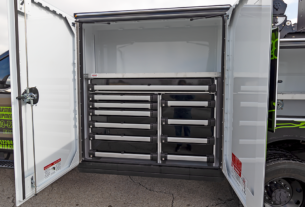Rethreading tools are a must-have for any mechanic or DIY enthusiast. Whether you’re working on a car, bike, or any other machinery that requires threading, having the right tool can make all the difference. In this guide, we’ll take you through everything you need to know about rethreader tools.
What are Rethreader Tools?
A rethreader tool is a device used to repair damaged threads on bolts, nuts, and other fasteners. The tool works by cutting new threads into the damaged area, allowing the original fastener to be reused instead of having to replace it.
Types of Rethreader Tools
There are different types of rethreader tools available in the market. Each type has its unique features and applications. Some of the most common types of rethreader tools include:
1. Die Wrenches – These are handheld tools used to repair threads on bolts and studs. They come in various sizes and can be used with or without lubrication.
2. Tap Sets – These are used to create new threads in holes that have no threads at all. They come in sets with different sizes and thread pitches.
3. Thread Inserts – Thread inserts are used to reinforce existing threads that have been stripped or damaged. They come in different materials such as stainless steel, brass, and nylon.
4. Helicoil Kits – Helicoil kits are similar to thread inserts but use a specific coiled wire to reinforce existing threads.
Choosing the Right Rethreader Tool
Choosing the right rethreader tool depends on several factors such as the size of the fastener, the pitch of the thread, and the material being threaded. It’s essential to choose a tool that matches these specifications to ensure proper repair without further damaging the fastener or equipment.
Benefits of Using Rethreader Tools
Using rethreader tools can save time and money by repairing damaged threads instead of replacing the entire fastener. It also helps to maintain the original fit and function of the equipment.
How to Use Rethreader Tools
Using a rethreader tool requires some level of skill and knowledge. Here are some basic steps to follow when using a rethreader tool:
1. Clean the damaged area thoroughly to remove any debris or dirt.
2. Choose the appropriate size and pitch of the rethreader tool.
3. Apply lubrication to the tool if necessary.
4. Align the tool with the fastener and begin turning it in a clockwise direction.
5. Continue turning until the new threads have been cut entirely.
6. Remove the tool from the fastener and clean up any debris or shavings left behind.
7. Test the repaired fastener to ensure proper fit and function.
Tips for Maintaining Rethreader Tools
Proper maintenance of rethreader tools is essential to ensure their longevity and effectiveness. Here are some tips for maintaining your rethreader tools:
1. Clean them after each use to remove any debris or shavings.
2. Store them in a dry place away from moisture or humidity.
3. Lubricate them regularly to prevent rust and corrosion.
4. Sharpen them as needed to maintain their cutting edge.
Conclusion
Rethreader tools are an essential part of any mechanic’s toolbox, allowing you to repair damaged threads quickly and efficiently without having to replace the entire fastener or equipment. By choosing the right tool, following proper usage guidelines and maintenance procedures, you can keep your machinery running smoothly for years to come.
References:
Wikipedia: https://en.wikipedia.org/wiki/Rethreading_tool




